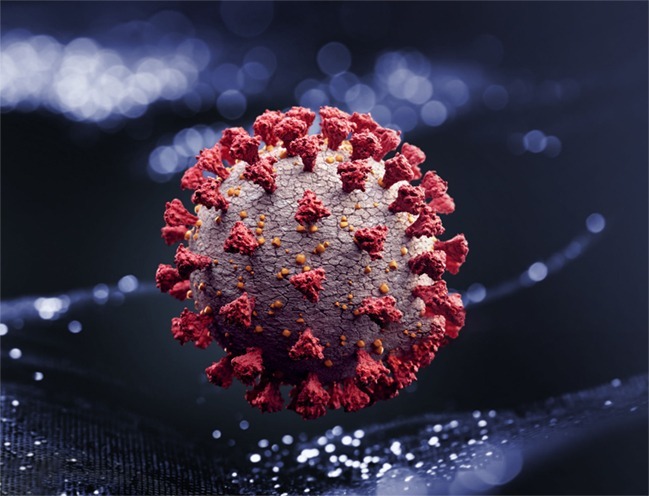Double-Mutant and Triple-Mutant Indian Covid Variants
Two mutated variants of Covid have been detected in India. The first mutated type of coronavirus found in India includes two key mutations in the outer part of the virus known as E484Q and L452R. The spike protein of the virus plays a major role in the virus entering the cells of the body and multiplying. These mutations have been observed separately in other variants of the coronavirus. However, in the case of the Indian variant, these two mutations have occurred together. For this reason, this Indian variant is described as having a “double mutation”.
The ‘double mutant’ Covid variant is of higher transmissibility and has become a major concern in several counties, including England. The World Health Organization (WHO) describes the Indian Covid as a “variant of interest” along with other mutant variants, including the British, Brazilian and South African ones, indicating a higher level of threat. While the challenges of the double-mutant virus have not yet subsided, another new generation of Covid-19 has been tracked in West Bengal. This variant is scientifically dubbed B.1.618 and is a triple-mutant variant. The World Health Organization considers it a highly contagious variant.
Indian Covid-19 Variants in the UK
As India was included in the British government’s red list of countries, the British Ministry of Health announced that as of 21 April, 132 cases of the Indian virus have been identified. The number of people with Indian Covid-19 increased by more than 100% in England within just one week, the country’s health authority said. The number of cases of the Indian variant had reached 6,959 by Wednesday, 26 May 2021, an increase of 3,535 cases within one week.
The British Health Minister, Matt Hancock, has also warned that the Indian variant could spread quickly. The new strain has been added to the British government’s list of worrying diseases, and the British prime minister’s office has announced that this is being investigated by experts.
Covid-19 Restrictions in the UK
While most European countries are imposing new restrictions to slow down the spread of the virus in the new wave of the pandemic, Britain is moving out of quarantine and gradually reducing restrictions.
Most of the restrictions imposed since January last year, following the unbridled outbreak of the pandemic, have been lifted so far and only one last step remains for the situation to return to normal. According to the British government’s roadmap, most of the restrictions will be lifted from 21 June. From Monday, 21 June, bars, pubs, and restaurants can serve customers inside; cinemas, museums and theatres will reopen and indoor sports will resume. Meanwhile, British Prime Minister Boris Johnson warned at a government news conference about the possibility of postponing the last step of easing the lockdown, saying that the government may have to make tough decisions in this regard.
The Impact of the Spread of the Virus
Health experts in the UK predict that the number of patients will rise again after the easing of restrictions. The implementation of the vaccination plan will not help control the pressure on the country’s hospitals, which were paralysed during the second and third waves by the influx of patients.
But how dangerous is it to attend indoor public spaces such as cafes, restaurants, bars, pubs, social clubs, etc. It should be noted that Covid-19 is spread mainly through respiratory droplets infected with the virus while talking, coughing or sneezing, and the virus may be transmitted by touching infected surfaces and then hand contact with the nose or mouth. The more one interacts with other people, the greater the risk of developing Covid-19.
In indoor public spaces without adequate ventilation, droplets or aerosols remain in the air, which increases the risk of virus transmission. Moreover, not observing a physical distance of at least one metre, which happens commonly in indoor public spaces, can increase the chance of virus transmission. Furthermore, public spaces with low ceilings can be more dangerous. In addition, surfaces in public spaces are touched by various people, some of whom may be (asymptomatic) transmitters of the virus. Thus, such infected surfaces may transmit the virus to others. It needs to be remembered that the Indian Covid-19 variant is said to be more resistant against vaccines. Thus, even people who have taken the vaccine are advised to avoid indoor public spaces, especially if preventative measures are not taken seriously by others.
Preventative measures can be taken in public spaces to reduce the chances of transmitting the virus, including the Indian variant. Personal preventive measures (such as wearing a mask, washing hands, staying home when sick), cleaning and disinfecting surfaces, ventilation of indoor public spaces, observing physical distances, etc, are important principles of prevention. However, due to the paucity of research and information on the nature of the Indian mutated variants of Covid-19, the British government needs to be cautious about reopening indoor public spaces before the features (such as transmissibility and resistance to vaccines) of the Indian Covid-19 variants are revealed. Otherwise, the last step of easing restrictions may turn into a British national disaster, or even a global catastrophe.

